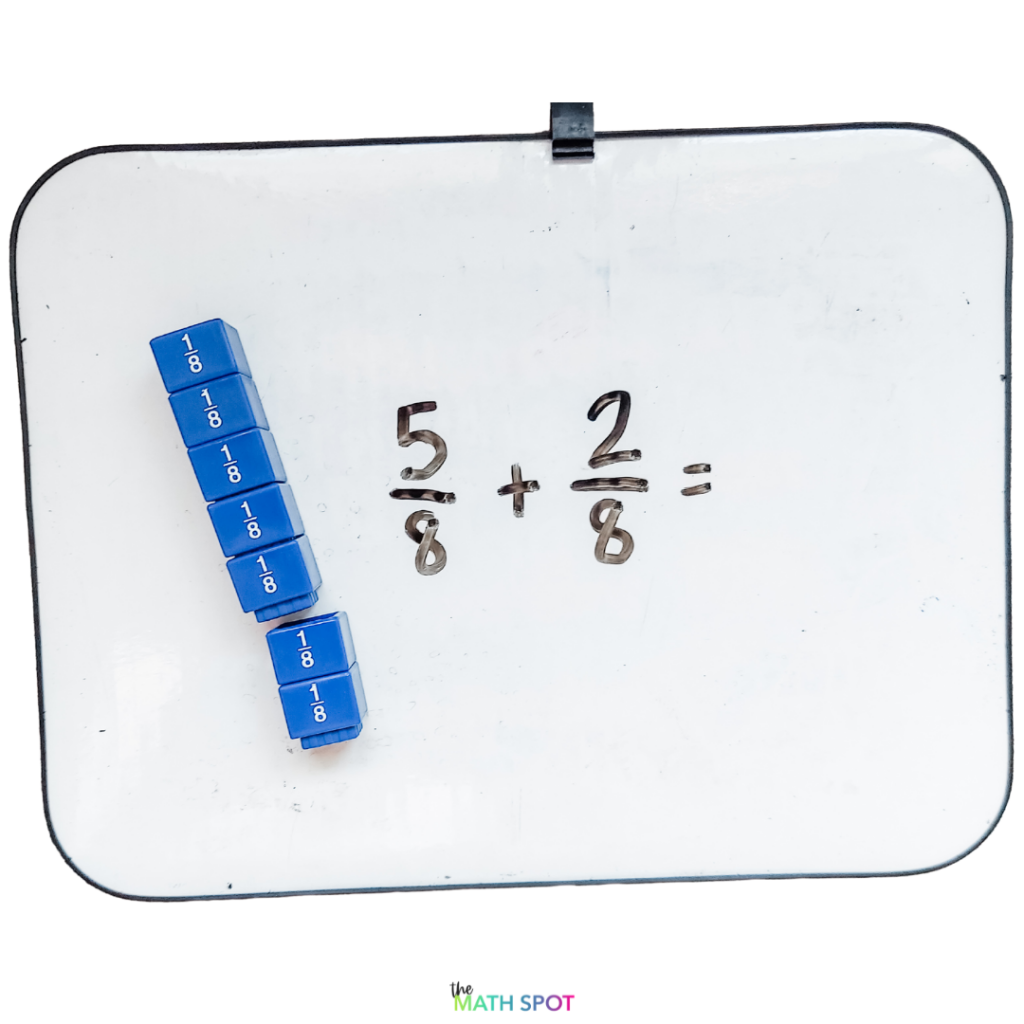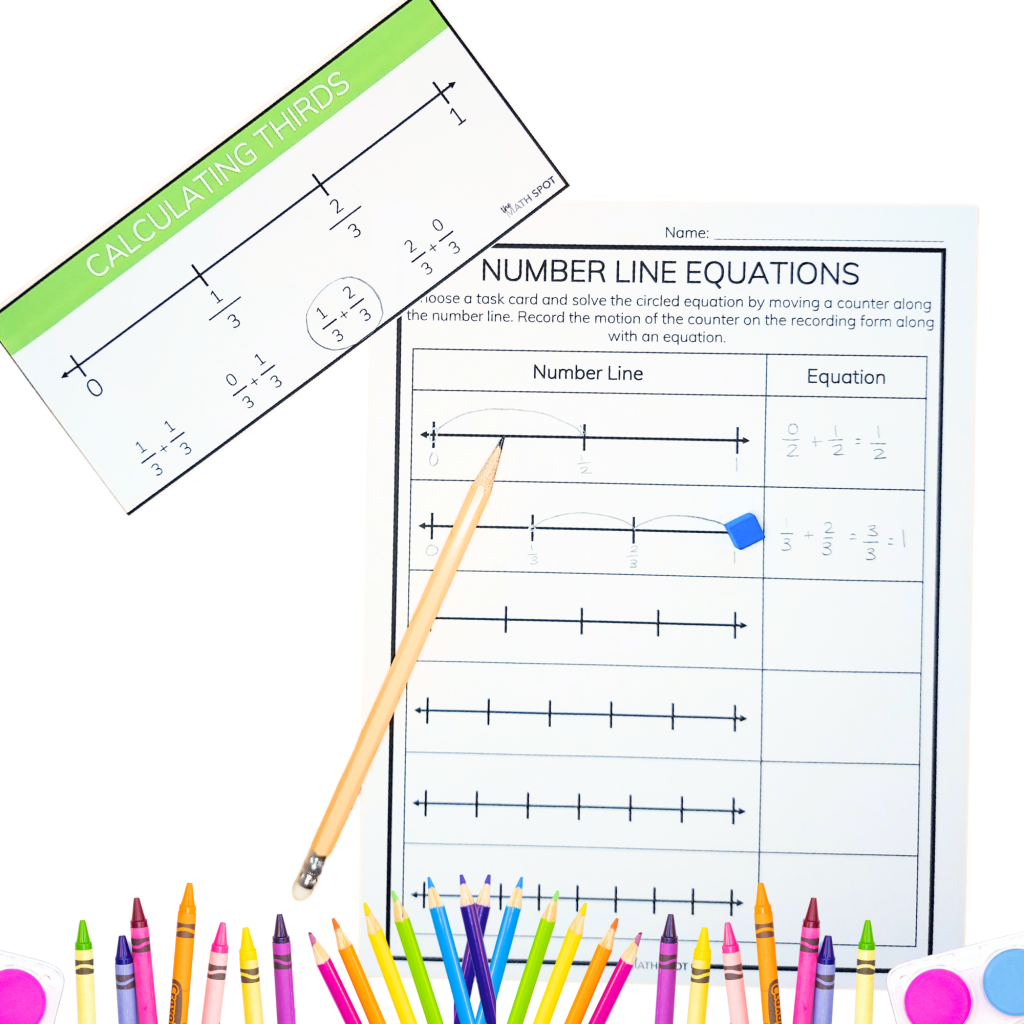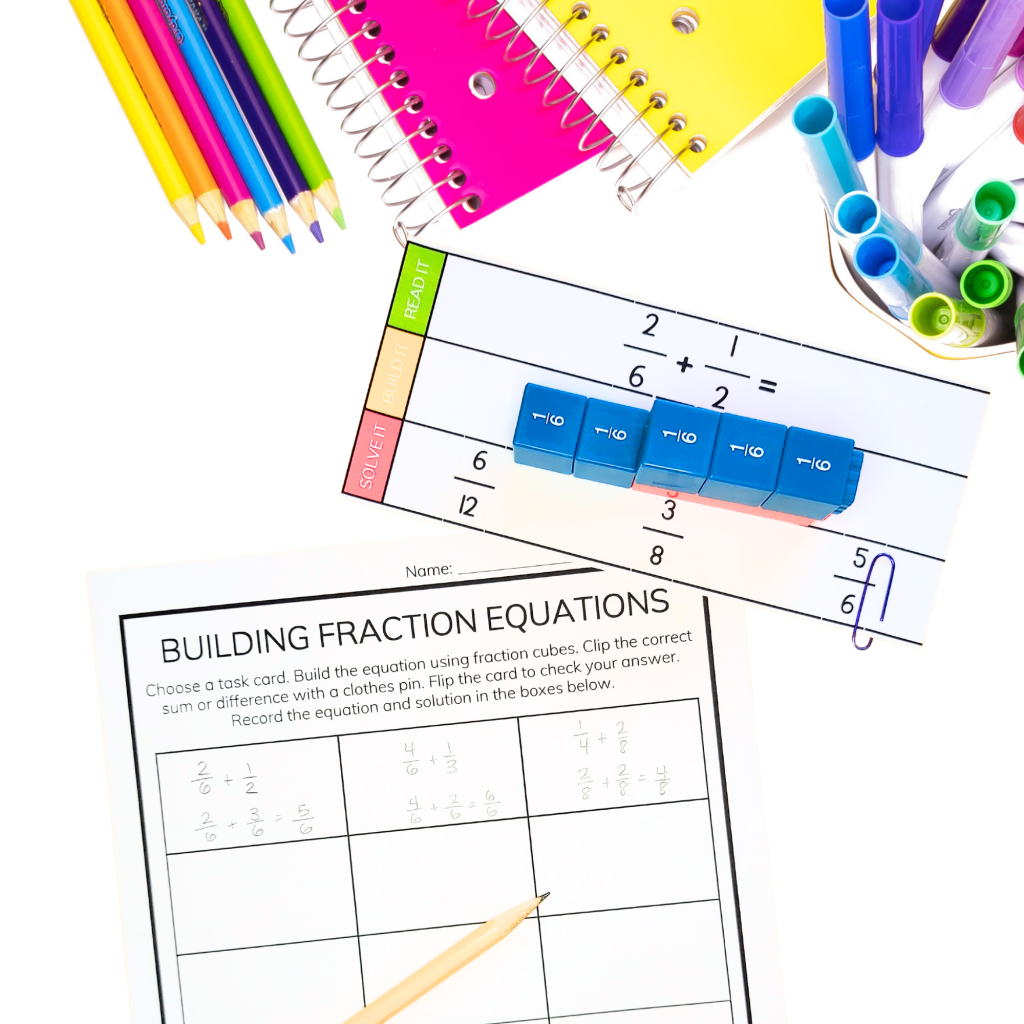This post contains affiliate links. This means that when you make a purchase, at no additional cost to you, I will earn a small commission.
You absolutely MUST start with hands-on activities for adding and subtracting fractions. It’s an abstract concept that can easily be made concrete for your learners. Let’s jump into a few activities you can try when adding and subtracting with like or unlike denominators.
When you are considering hands-on activities for adding and subtracting fractions, be sure to pair each of the hands-on activities with a drawing (representational model) and or an equation (abstract model). In the future, when you are ready to strip the hands-on materials away, your students will already have made connections so they are better prepared to continue their work without manipulatives.

Adding and Subtracting Fractions with Like Denominators with Fraction Bars
Using a concrete material that is labeled such as fraction bars helps to make the addition of fractions tangible for your students.
Simply model each fraction being built and push them together to combine. It can be useful to keep a fraction bar representing the whole handy so that your students see each fractional piece as a part of the whole and are grounded in the size of the whole.

Adding and Subtracting Fractions with Like Denominators Using Pattern Blocks
Pattern blocks, much like fraction bars, allow your students to make an abstract concept like adding and subtracting fractions concrete and tangible. Using pattern blocks increases the cognitive load on your students as they are not labeled like fraction bars.
Ask your students to add fractions on top of a hexagon (the whole) so that they can see how the pieces they are adding compare to the whole.
Adding and Subtracting Fractions with Like Denominators on A Number Line
Don’t discount number lines when searching for hands-on activities for adding and subtracting fractions. Representing addition or subtraction on a number line is likely a strategy your students have encountered with whole numbers. Connect this known strategy to the new skill of adding or subtracting fractions with like denominators!
- Draw a number line and divide it into pieces equal to the fraction you are working with.
- Ask your students to place a game piece to represent the first fraction that is being added.
- Ask your students to move the game piece along the number line to represent the second fraction being added.
If this is difficult for your students, lay fraction bars alongside the number line. This will connect the hands-on experience your students are more comfortable with to the new strategy of adding along a number line.
This is an excellent strategy to use when you are ready to start moving away from hands-on tools and towards a representative model like a paper/pencil number line without a game piece that they are physically moving.
Adding and Subtracting Fractions with Unlike Denominators Using Pattern Blocks
As your students experiment combining fractions with unlike denominators moving back to a tool like pattern blocks can bring ease to a very tricky concept!
Provide your students with an equation such as 1/6 + 1/3. Ask them how they would represent 1/6 and 1/3 using pattern blocks. Laying these blocks on top of a hexagon (the whole) your students will easily see that the total of ½ is represented.
If you are ready to help your students notice the concept of common denominators you can also ask your students if there is a way to “trade” the 1/3 piece so that your fractions have common denominators. This will come into play especially as you explore subtraction with pattern blocks.
Writing equations alongside this hands-on exploration will help your students to transition away from hands-on tools down the line so be sure to keep a dry erase board and markers close at hand.

Adding And Subtracting Fractions With Unlike Denominators using Fraction Bars or Fraction Cubes
When adding fractions with unlike denominators using fraction bars or fraction cubes, ask your students to represent each fraction. Next, experiment to see if there is a common piece that can be used to represent each fraction.
For example, what type of piece could be used to build a fraction equivalent to both ½ and 1/3? Your students will find that some pieces (1/4) can neatly cover the ½ fraction bar but can not be used to build a fraction equivalent to 1/3. Other pieces (1/6) can be used to build a fraction equivalent to both ½ and 1/3.
Focus less on “procedure” in this type of activity and more on the exploration itself! You are developing your students’ number sense around fractions when you introduce visual models that your students can manipulate.



